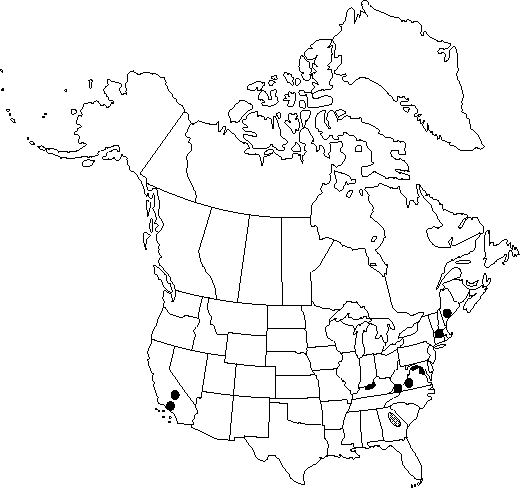Ulmus parvifolia
Pl. Hort. Schoenbr. 3: 6, plate 262. 1798.
Trees, 25 m; crowns rounded, open. Bark olive green to gray, shedding in irregular, tan to orange plates. Branches long-pendulous, not winged; twigs tan to dark brown, glabrous to pubescent. Buds acute to obtuse; scales brown, pubescent. Leaves: petiole 2-6(-8) mm, glabrous or sparsely pubescent with short hairs. Leaf blade elliptic to ovate-obovate, (3.5-)4-5(-6) × 1.5-2.5 cm, base oblique, margins mostly singly serrate (some doubly serrate), apex acute; surfaces abaxially pale, glabrate, adaxially dark green, lustrous, glabrous; lateral veins forking 5 or more times per side. Inflorescences fascicles, (2-)3-4(-8)-flowered; pedicel 8-10 mm. Flowers: calyx reddish brown, deeply lobed, lobes (3-)4-5, glabrous; stamens 3-4; anthers reddish; stigma lobes white-pubescent, exserted, recurved and spreading with maturity. Samaras green to light brown, elliptic to ovate, ca. 1 cm, not winged, seeds nearly filling samara, notched at apex, glabrous. Seeds thickened, not inflated. 2n = 28.
Phenology: Flowering late summer–early fall.
Habitat: In woods and in disturbed sites
Elevation: 0-400 m
Distribution

Calif., D.C., Ga., Ky., Maine, Md., Mass., Va., native to Asia (China and Japan).
Discussion
Ulmus parvifolia appears to naturalize more easily than U. procera or U. glabra. It has been reported but not documented from Idaho and West Virginia.
Ulmus parvifolia is valued in cultivation for its pleasing form and ornamental bark. It is ruderal primarily in the southeastern United States.
Selected References
None.